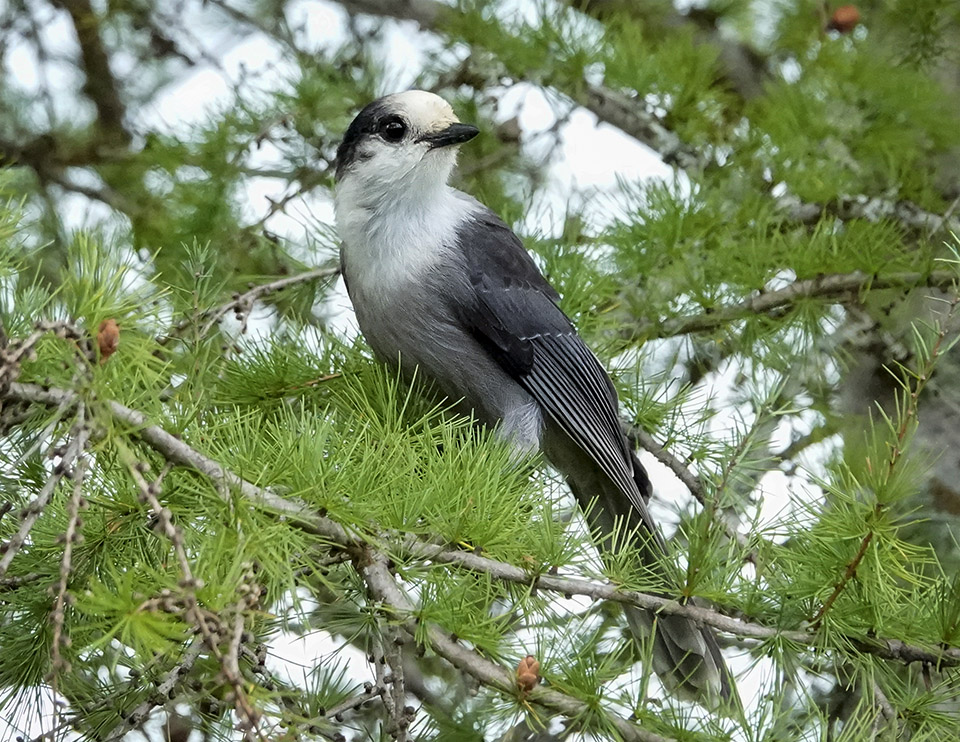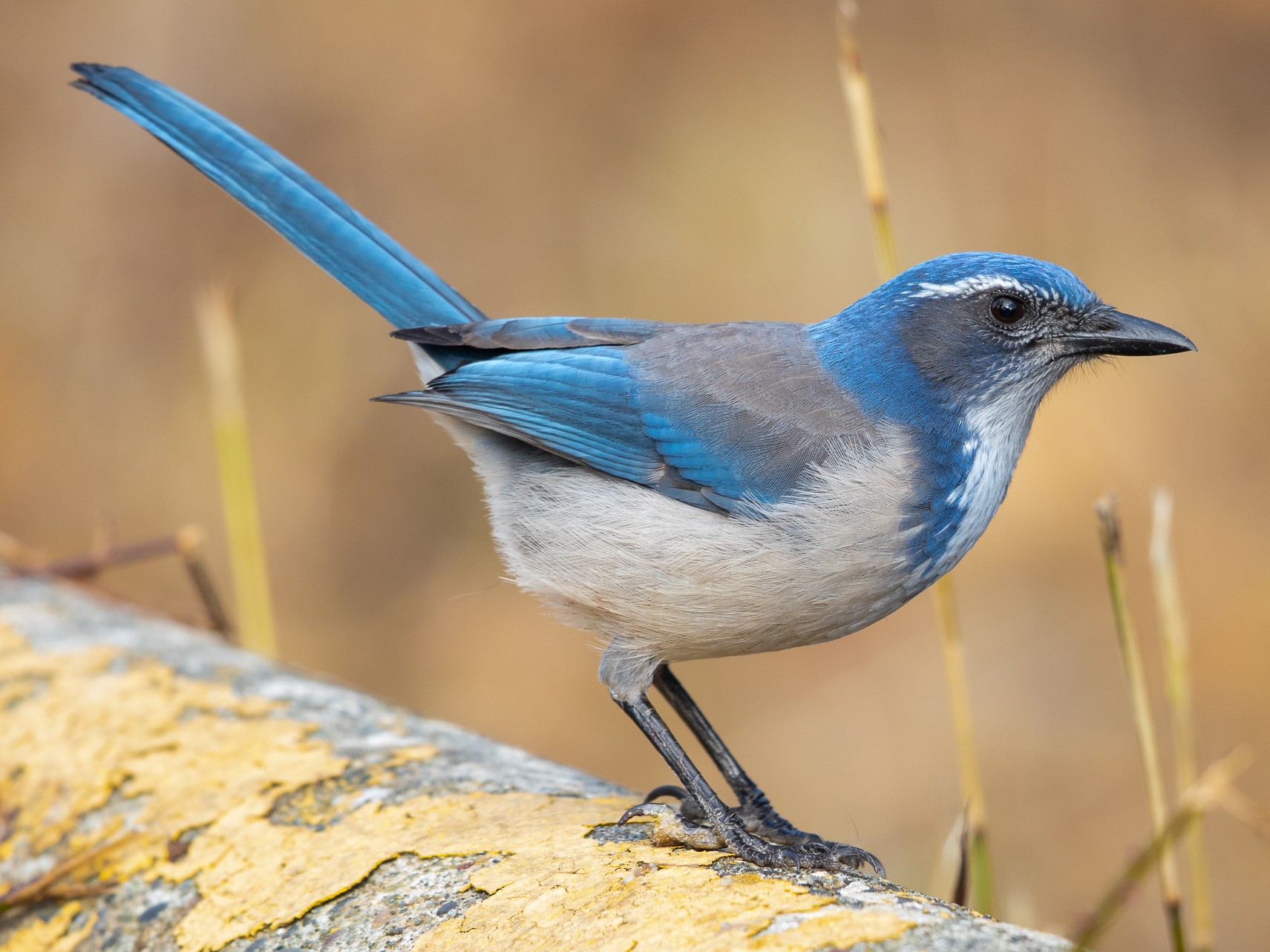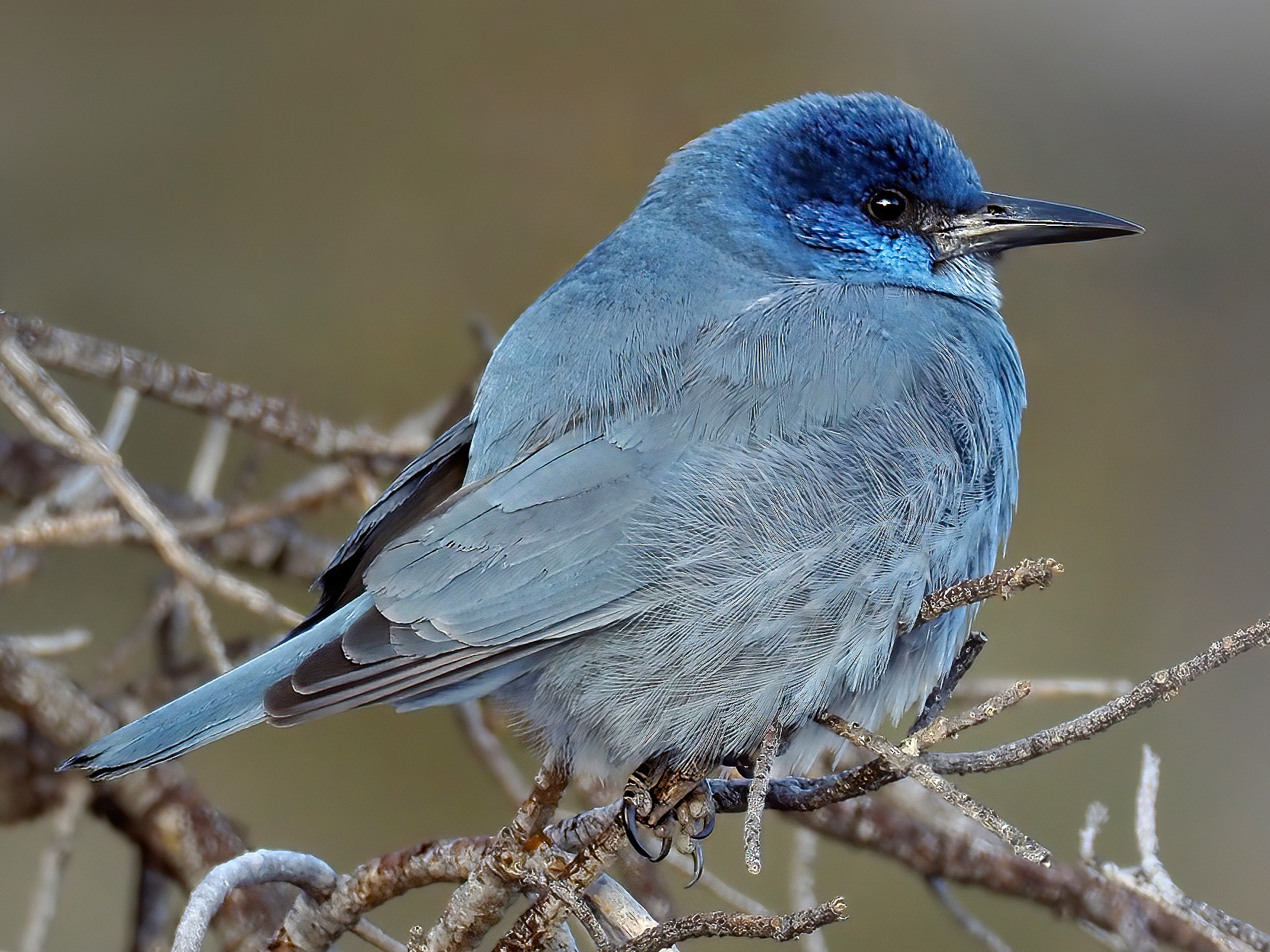Jays are a group of medium-sized, colorful, and noisy passerine birds in the crow family, Corvidae. They are known for their bold and raucous manner and are nearly omnivorous.
Jays are considered to be among the most intelligent species of the bird world. They are also the loudest and flashiest of the Corvidae family, which also includes crows, ravens, and magpies.
You are reading: 8 Beautiful Types Of Jay Birds
There are at least 10 types of jays that live in North America, and some of the most stunning jays reside in the Americas. In this article, we will introduce you to eight beautiful types of jay birds that you should know about.

8 Beautiful Types Of Jay Birds
Blue Jay
The Blue Jay (Cyanocitta cristata) is a passerine bird in the family Corvidae, native to eastern North America. It is a common, large songbird that is familiar to many people, with its perky crest, blue, white, and black plumage, and noisy calls.
Blue Jays are known for their intelligence and complex social systems, and have tight family bonds. They often mate for life, remaining with their social mate throughout the year.
Blue Jays are most often detected by their noisy calls, and they are known for mimicking the calls of hawks, especially the Red-shouldered Hawk, which may provide information to other jays that a hawk is around, or may be used to deceive other species into believing a hawk is present.
Blue Jays are found in most of the eastern and central United States, and some eastern populations may be migratory. Resident populations are also in Newfoundland, Canada; breeding populations are found across southern Canada.
Blue Jays are birds of forest edges and are common in residential areas. They occupy a variety of habitats within their large range, from the pine woods of Florida to the spruce-fir forests of northern Ontario. They are less abundant in denser forests, preferring mixed woodlands with oaks and beeches.
Blue Jays are known for their moderately slow flight when unprovoked, with body and tail held level, and slow wing beats. Their slow flying speeds make this species easy prey for hawks and owls when it flies in open areas.
Virtually all the raptorial birds sympatric in distribution with the blue jay may prey upon it, especially swift bird-hunting specialists such as the Accipiter hawks. Blue Jays are also frequent visitors to bird feeders, where they are often aggressive towards other birds.
Steller’s Jay
Steller’s Jay (Cyanocitta stelleri) is a large songbird native to western North America and the mountains of Central America. It is closely related to the Blue Jay found in eastern North America, but is distinct from it. Here are some key features of Steller’s Jay:
– Appearance: Steller’s Jays are large songbirds with large heads, chunky bodies, rounded wings, and a long, full tail. They have a prominent triangular crest that often stands nearly straight up from their head. They are black and blue with a crest, and have bold white markings around the eye. They show marked variation across their range, with coastal populations having light blue markers and birds in the far west along the Pacific Coast having small, very faint, or no white or light markings at all.
Read more : Senegal Parrot For Sale In Florida
– Size: Steller’s Jays are about the same size as a Western Scrub-Jay, between a robin and a crow. They measure 11.8-13.4 in (30-34 cm) in length, weigh 3.5-4.9 oz (100-140 g), and have a wingspan of 17.3 in (44 cm).
– Habitat: Steller’s Jays occur in coniferous forests, usually in small groups. They can be found anywhere from the southern coast of Alaska to North Central Nicaragua, and their range follows the Rocky Mountains down from Alaska all the way to Nicaragua. They can also be found as far west as the Pacific Coast and as far east as Eastern Colorado. Steller’s Jays are typically found in elevations between three thousand and ten thousand feet, but in some cases, they may be found at lower elevations such as the evergreen forests of the Pacific coastal foothills.
– Behavior: Steller’s Jays are loud and conspicuous, and their harsh calls are easy to recognize. They are known to visit feeders, campgrounds, and picnic areas. Steller’s Jays are also known for their intelligence and complex social systems, and have tight family bonds. They often mate for life, remaining with their social mate throughout the year.
Steller’s Jays are a beautiful and fascinating species of jay bird that are worth learning more about.
Green Jay

The Green Jay (Cyanocorax yncas) is a beautiful and colorful bird species that is native to Central and South America. Here are some key features of the Green Jay:
Appearance:
– Green Jays are a brilliant green, yellow, and blue jay of the tropics. They have a thick, straight bill, a long, rounded tail, and fairly long legs. They are sturdy jays without a crest.
– Birds from Texas to Honduras have a blue crown, dark eye, and relatively uniform lime-green body, and occur in small flocks in woodland with brushy understory. Birds in South America, sometimes called Inca Jays, occur in Andean cloud forest from Venezuela to Bolivia. They show a white crown, pale eye, blue forehead tuft, and rich sulphur-yellow belly contrasting with darker green upperparts.
Size:
– Green Jays are larger than a Northern Mockingbird, but smaller than a Northern Flicker, and similar in size to a Blue Jay. They measure 11.4 in (29 cm) in length, weigh 2.3-3.9 oz (66-110 g), and have a wingspan of about 16 in (40 cm).
Habitat:
– Green Jays are found in Central and South America, from southern Texas to Honduras. They occur in a variety of habitats, including brushlands and forests, seeking insects, small vertebrates, and fruit to eat.
Behavior:
– Green Jays are noisy and gregarious birds that travel in conspicuous family flocks. They are known to use sticks to pry up loose bark, exposing insect prey, and are among the few North American bird species known to use tools. They are also excellent mimics, like the more familiar Blue Jays, and may imitate the call of various hawks to frighten away other bird species from food they want to eat.
Green Jays are a stunning and unmistakable species of jay bird that are worth learning more about.
Gray Jay
The Gray Jay (Perisoreus canadensis), also known as the Canada jay, grey jay, camp robber, or whisky jack, is a passerine bird of the family Corvidae. It is found in boreal forests of North America north to the tree line, and in the Rocky Mountains subalpine zone south to New Mexico and Arizona. Here are some key features of the Gray Jay:
Appearance:
– Gray Jays are medium-sized songbirds with a rounded head, short neck, and a long, rounded tail. They have a pale gray head, neck, and underparts, with darker gray upperparts and a blackish-brown nape. They have a short, thick bill and a small, dark eye. They are often described as “fluffy” or “plump” in appearance.
Size:
– Gray Jays are slightly smaller than a Steller’s Jay or Blue Jay, measuring 9.8-11.8 in (25-30 cm) in length, weighing 2.3-3.5 oz (65-100 g), and having a wingspan of about 18 in (46 cm).
Habitat:
– Gray Jays are found in boreal forests of North America, from Alaska to Newfoundland and Labrador, and south to the Rocky Mountains. They are also found in subalpine forests in the western United States. They are non-migratory and remain in their breeding territories year-round.
Behavior:
– Gray Jays are known for their intelligence and complex social systems, and have tight family bonds. They often mate for life, remaining with their social mate throughout the year. Gray Jays are also known for their food caching behavior, where they store food in the fall to eat during the winter months when food is scarce. They are also known to steal food from other birds and animals, earning them the nickname “camp robber”.
Gray Jays are a fascinating and unique species of jay bird that are well adapted to life in the boreal forests of North America.
Florida Scrub-Jay
The Florida Scrub-Jay (Aphelocoma coerulescens) is a species of scrub jay that is native to Florida, United States. Here are some key features of the Florida Scrub-Jay:
Appearance:
– Florida Scrub-Jays are round-headed, blue and gray birds with a long tail and a thick bill. They have a blue-gray head, neck, and breast, with a gray back, wings, and tail. They have a white throat and belly, and a blue patch on their wings. They are slightly smaller than a Blue Jay, measuring 9-12 in (23-30 cm) in length, weighing 2.3-3.5 oz (65-100 g), and having a wingspan of about 15 in (38 cm).
Habitat:
– Florida Scrub-Jays are found only in Florida, where they occur in patches of low-growing scrub oak and sand pine scrub. They are non-migratory and remain in their breeding territories year-round.
Behavior:
– Florida Scrub-Jays are known for their intelligence and complex social systems, and have tight family bonds. They often mate for life, remaining with their social mate throughout the year. Florida Scrub-Jays are also known for their cooperative breeding behavior, where extended families live together but have only one breeding pair. The non-breeding members of the family help to raise the young, and may even assist with feeding the breeding pair’s chicks.
Conservation status:
– Florida Scrub-Jays are listed as Endangered by the International Union for Conservation of Nature (IUCN) due to habitat loss and fragmentation. The estimated population is between 7,000 to 11,000 individuals.
Florida Scrub-Jays are a unique and fascinating species of jay bird that are worth learning more about.
Western Scrub-Jay

The Western Scrub-Jay (Aphelocoma californica) is a species of scrub jay native to western North America. It was once lumped with Woodhouse’s scrub jay and collectively called the western scrub jay. The group was also lumped with the island scrub jay and the Florida scrub jay; the taxon was then called simply scrub jay. Here are some key features of the Western Scrub-Jay:
Appearance:
– Western Scrub-Jays are medium-sized songbirds with a long tail and a thick bill. They have a blue head, wings, and tail, with a brown back and a grayish-white throat and underparts. They do not have a crest like Steller’s Jays or Blue Jays. They are slightly smaller than a Blue Jay, measuring 10-12 in (25-30 cm) in length, weighing 2.3-3.5 oz (65-100 g), and having a wingspan of about 15 in (38 cm).
Habitat:
– Western Scrub-Jays are found in the western United States, from Washington State south through California and into Mexico, and east to Texas. They are non-migratory and remain in their breeding territories year-round. They are found in semidesert scrub, chaparral, and open oak woodlands near the Pacific coast, and dry mountain canyons with pinyon pine and juniper forests in the Rockies, but they prefer scrubby, brushy areas. Coastal subspecies are often found in backyards.
Behavior:
– Western Scrub-Jays are known for their intelligence and complex social systems, and have tight family bonds. They often mate for life, remaining with their social mate throughout the year. Western Scrub-Jays are also known for their food caching behavior, where they store food in the fall to eat during the winter months when food is scarce. They are also known to steal food from other birds and animals, earning them the nickname “camp robber”.
Read more : Why Do Birds Eat Their Poop
Western Scrub-Jays are a fascinating and unique species of jay bird that are well adapted to life in the western United States.
Pinyon Jay

The Pinyon Jay (Gymnorhinus cyanocephalus) is a species of jay bird that is native to Western North America. Here are some key features of the Pinyon Jay:
Appearance:
– Pinyon Jays are medium-sized songbirds with a blue-gray head, neck, and breast, and a gray back, wings, and tail. They have a thick, black bill and a small, dark eye. They do not have a crest like Steller’s Jays or Blue Jays. They are slightly smaller than a Blue Jay, measuring 9-11 in (23-28 cm) in length, weighing 2.3-3.5 oz (65-100 g), and having a wingspan of about 16 in (41 cm).
Habitat:
– Pinyon Jays are found in the western United States, from central Oregon to northern Baja California, and eastward as far as western Oklahoma. They are non-migratory and remain in their breeding territories year-round. They are found in foothills, especially where pinyon pines (Pinus edulis and Pinus monophylla) occur.
Behavior:
– Pinyon Jays are known for their intelligence and complex social systems, and have tight family bonds. They often mate for life, remaining with their social mate throughout the year. Pinyon Jays are also known for their flocking behavior, where they travel in large, noisy flocks throughout pinyon-juniper, chaparral, and scrub-oak woodlands. They are also known to cache food, like other species of jays, and may store thousands of seeds in a single season.
Pinyon Jays are a unique and fascinating species of jay bird that are well adapted to life in the western United States.
Mexican Jay
The Mexican Jay (Aphelocoma wollweberi) is a medium-sized jay bird that is native to the Sierra Madre Oriental, Sierra Madre Occidental, and Central Plateau of Mexico, as well as parts of the southwestern United States. Here are some key features of the Mexican Jay:
Appearance:
– Mexican Jays are medium-sized songbirds with a robust body, long tail, short neck, heavy, pointed bill, and long, strong legs and feet. They have blue upperparts and pale gray underparts, with a gray patch on the back. They are slightly larger than a Blue Jay, measuring 11-12 in (28-30 cm) in length, weighing 2.5-3 oz (70-85 g), and having a wingspan of about 16 in (41 cm).
Habitat:
– Mexican Jays are found in pine-oak woodlands in mountains and canyons from Arizona to central Mexico. They are non-migratory and remain in their breeding territories year-round. Eastern populations occur in the Big Bend region of Texas and south into Mexico.
Behavior:
– Mexican Jays are known for their intelligence and complex social systems, and have tight family bonds. They often mate for life, remaining with their social mate throughout the year. Mexican Jays are also known for their flocking behavior, where they travel in large, noisy flocks throughout pine-oak woodlands. They are also known to cache food, like other species of jays, and may store thousands of seeds in a single season.
Mexican Jays are a unique and fascinating species of jay bird that are well adapted to life in the pine-oak woodlands of Mexico and the southwestern United States.
FAQS
1. What are jay birds?
Jays are a group of medium-sized, colorful, and noisy passerine birds in the crow family, Corvidae. They are known for their bold and raucous manner and are nearly omnivorous.
2. How many types of jays are there in North America?
There are at least 10 types of jays that live in North America, including the Blue Jay, Steller’s Jay, Western Scrub-Jay, and Florida Scrub-Jay.
3. What is the difference between a Blue Jay and a Steller’s Jay?
Blue Jays are bright blue with white wing-bars and a jaunty crest of feathers, while Steller’s Jays are all-dark with a crest and small white or blue spots on their forehead.
4. Where are Pinyon Jays found?
Pinyon Jays are found in the western United States, from central Oregon to northern Baja California, and eastward as far as western Oklahoma.
5. What is the conservation status of the Florida Scrub-Jay?
The Florida Scrub-Jay is listed as Endangered by the International Union for Conservation of Nature (IUCN) due to habitat loss and fragmentation.
6. What is the food caching behavior of jays?
Jays, including the Western Scrub-Jay and Pinyon Jay, are known to cache food, like seeds and acorns, in the fall to eat during the winter months when food is scarce. They may store thousands of seeds in a single season.
7. What is the intelligence level of jays?
Jays, including the Blue Jay and Mexican Jay, are considered to be among the most intelligent species of the bird world. They are known for their problem-solving abilities, tool use, and complex social systems.
8. Do jays visit bird feeders?
Yes, jays, including the Blue Jay and Steller’s Jay, are frequent visitors to bird feeders, where they are often aggressive towards other birds.
Source: https://petstutorial.com
Category: Birds










